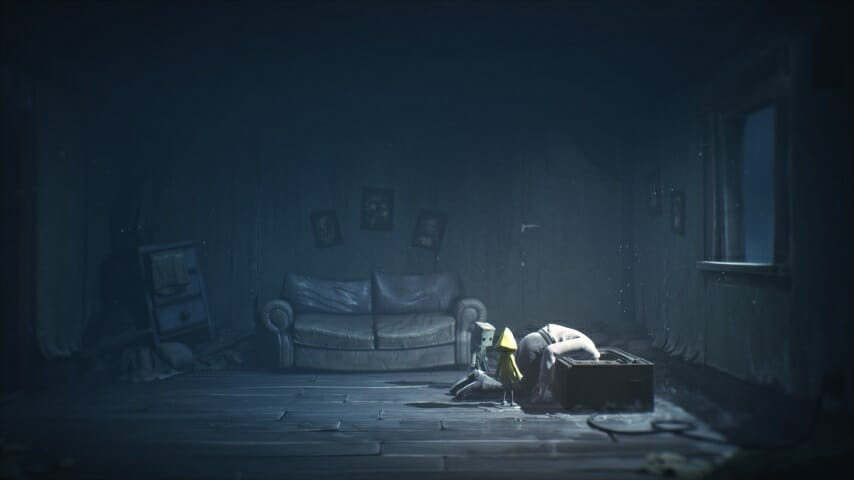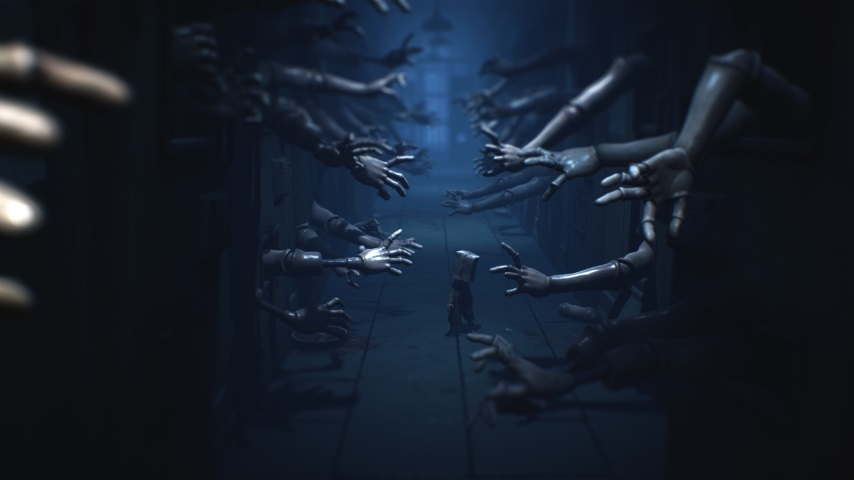Little Nightmares II Is a Disturbing, Gripping and Clever Expansion on the Original

As someone still relatively new to scary games, I’ve noticed that there tends to be at least two major actions associated with them: running and hiding. When you want the player to feel empowered in a typical action game, you give them lots of cool tools and gadgets to tackle baddies. But in horror games, where you want them to feel powerless, you give them just enough to survive on.
Such was the case for the majority of 2017’s Little Nightmares, in which players controlled a tiny raincoat-clad child, named Six, as they navigated a ship full of gluttonous, child-eating giants. With little to defend themselves against the monstrous fiends, players had to strategically plan exactly when and where they would hide or flee, lest they become the giants’ next meal.
Hiding and running are still key in Little Nightmares II, but so are other new actions. This time, we control another small child named Mono, who joins Six, now an A.I. companion, through a derelict town in which most of its giant-sized denizens are entranced by hypnotizing televisions. Using a similar premise, tone, set of mechanics and 2.5D perspective, Little Nightmares II sets itself up to be a by-the-numbers sequel to the original, adding a few new toys to play with and monsters to run from before calling it a day. By the end, however, I was impressed by how much more ambitious and varied this sequel is than its predecessor, despite not all of this ambition turning out for the better.
Like the original, the game never utters a line of cohesive dialogue, leaving it to the player to surmise the story based on context clues littered throughout. Despite never fully learning everyone’s motivations, especially those of Six, I was still invested in seeing that these two survived the horrors they faced.
With both having ratings of T for Teen by the ESRB, one would think these games would be a bit less scary than their M-rated counterparts. Although it’s true that we never see highly detailed blood or gore, I felt just as, if not more, disgusted playing through it than any scene from The Last of Us or the like. Both games take the perspective of a child, and as such, twist common childhood (and adult) fears into something hellish for all ages (although perhaps a bit too traumatizing for actual kids). Among the five main “bosses” encountered throughout the game, two include an abusive schoolteacher and a ceiling-crawling doctor, each of their respective locations containing hordes of troublemaking kids (who are actually plastic figures, unlike Mono and Six) and reanimated hands and body parts of the dead. In these ways, Little Nightmares II takes fears many of us held as children but have mostly cast aside in adulthood and makes them more terrifying than ever.
It’s not a constant fright fest, though. Like any good horror game, some of its tensest moments are when no active threats are near, but might be. Other moments are lighter, and the presence of a helpful companion in the form of Six means the sequel isn’t quite as isolating. At first, I was sad that a second player couldn’t take control of Six to help out, but it becomes apparent that Six mostly serves as another element of puzzle-solving within gameplay, being needed to get Mono to otherwise unreachable areas.
